Object-handling at home – the smock

In this special #MuseumFromHome post our curator, Ollie Douglas, introduces us to smocks and helps us to think about how they are made and what we know about them. He describes some simple, hands-on ways for us to think and learn about their physical attributes (all without having to leave our own homes).
Smocks were originally work overalls, used to cover and protect the wearer and their clothes. From shepherds to waggoners, artists to nurses, there are numerous professions that have made use of these flexible garments. The Museum has an extensive collection of smocks and we’ve explored some of their history online. We also recently set a smock-based challenge for users of the console game Animal Crossings – more about this below!
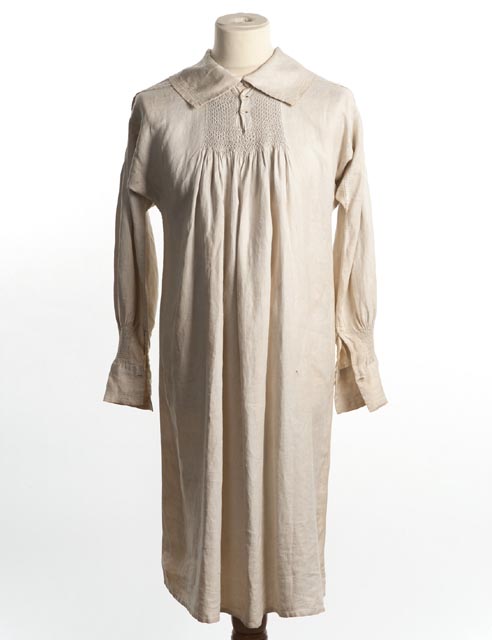
As with our recent bee skeps blog post, we know that you aren’t able to visit, get close to smocks in The MERL galleries, carefully examine one at our object-handling trolley, or try on a replica one from our dressing-up station. So, let’s use something from around your house to have a more detailed think about what smocks are like. Younger readers may want to ask a grown up to help them to find the thing they need and support them in their journey of smock discovery. As explained above, there are many typical uses of smocks. The ones we are exploring here link back to histories of the countryside, as well as to ideas of folk revival and the handmade.
1. Find the largest T-shirt you can, ideally a long-sleeved one – borrow it from a grown up or from the biggest person in your house. If you can’t find a T-shirt then a simple cotton dress, sweatshirt, or pullover will do. Try to use one that has a logo or a picture on it somewhere?
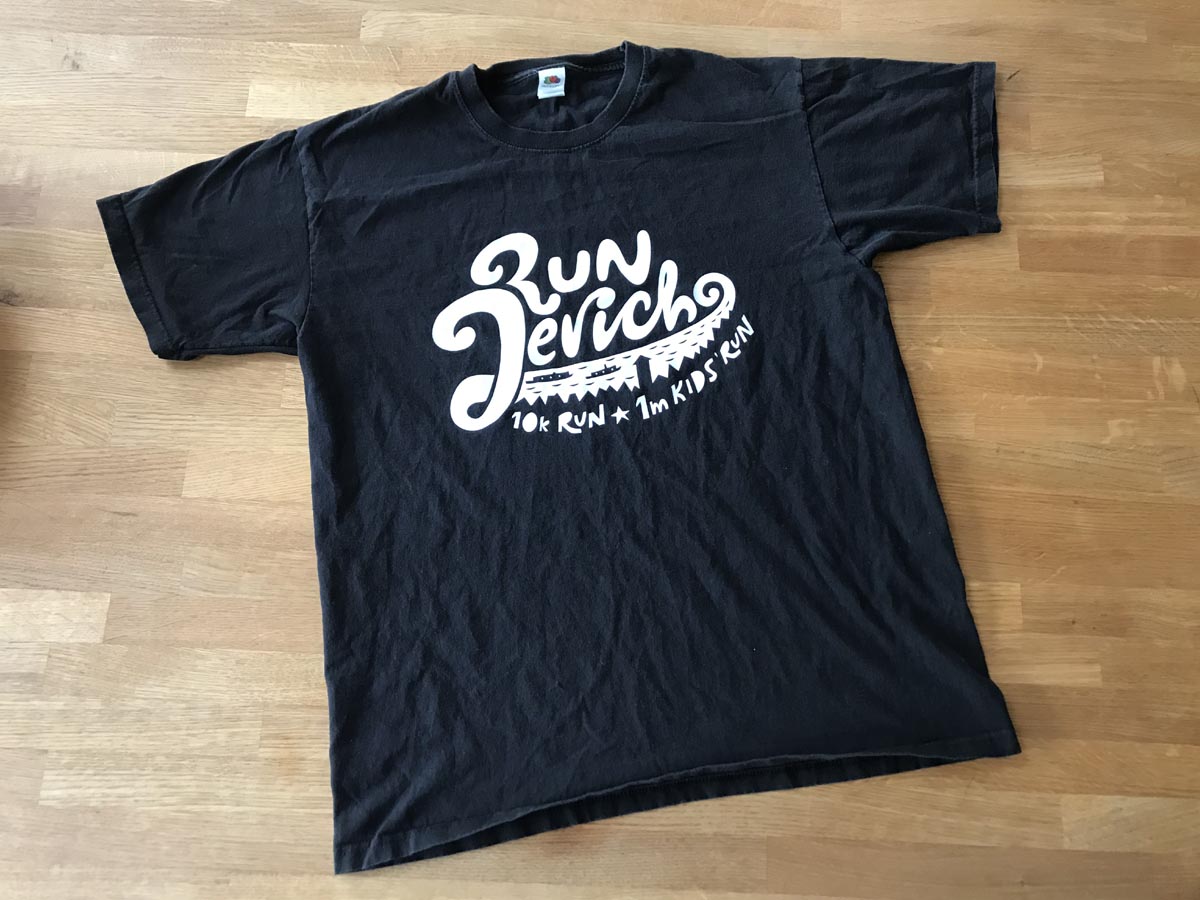
2. Put it on and see how much of your clothing it covers. Smocks we’re designed to do what the T-shirt is hopefully doing (if it’s really big, that is!). They were designed to cover and protect the clothes underneath from grease, oil, paint, muck, mud, and more.
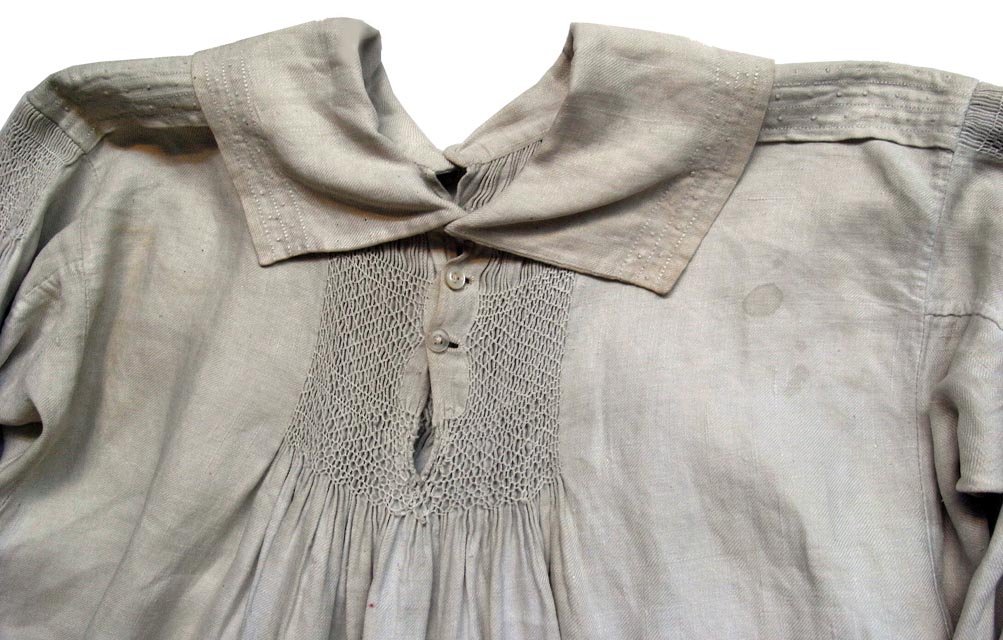
3. Now put the T-shirt on backwards. Does the neck feel uncomfortable? This is because T-shirts are not designed to be reversible. Many smocks were designed to be reversible, meaning their neckline was basically the same on both sides. This meant you could get twice the wear out of them. You could get grubby on the front and the back.
4. Has your T-shirt got a logo on the label or an image embroidered or printed on it? This is the T-shirt equivalent of smocking. Smocking is a type of decorative stitching used to make the collars and cuffs (and sometimes the rest) of a smock frock look a bit more exciting or attractive.
5. Now, take the T-shirt off and lay it down on a flat surface. You should be able to tell that the neckline isn’t reversible. You will probably also see a seam along the centreline of the shoulder. Many smocks wouldn’t have this seam. This is because they were made from a single piece of fabric, folded in half, and stitched down the sides, rather than a separate front and back. Your T-shirt might be similar but be one large loop of cloth with sleeves simply added on.
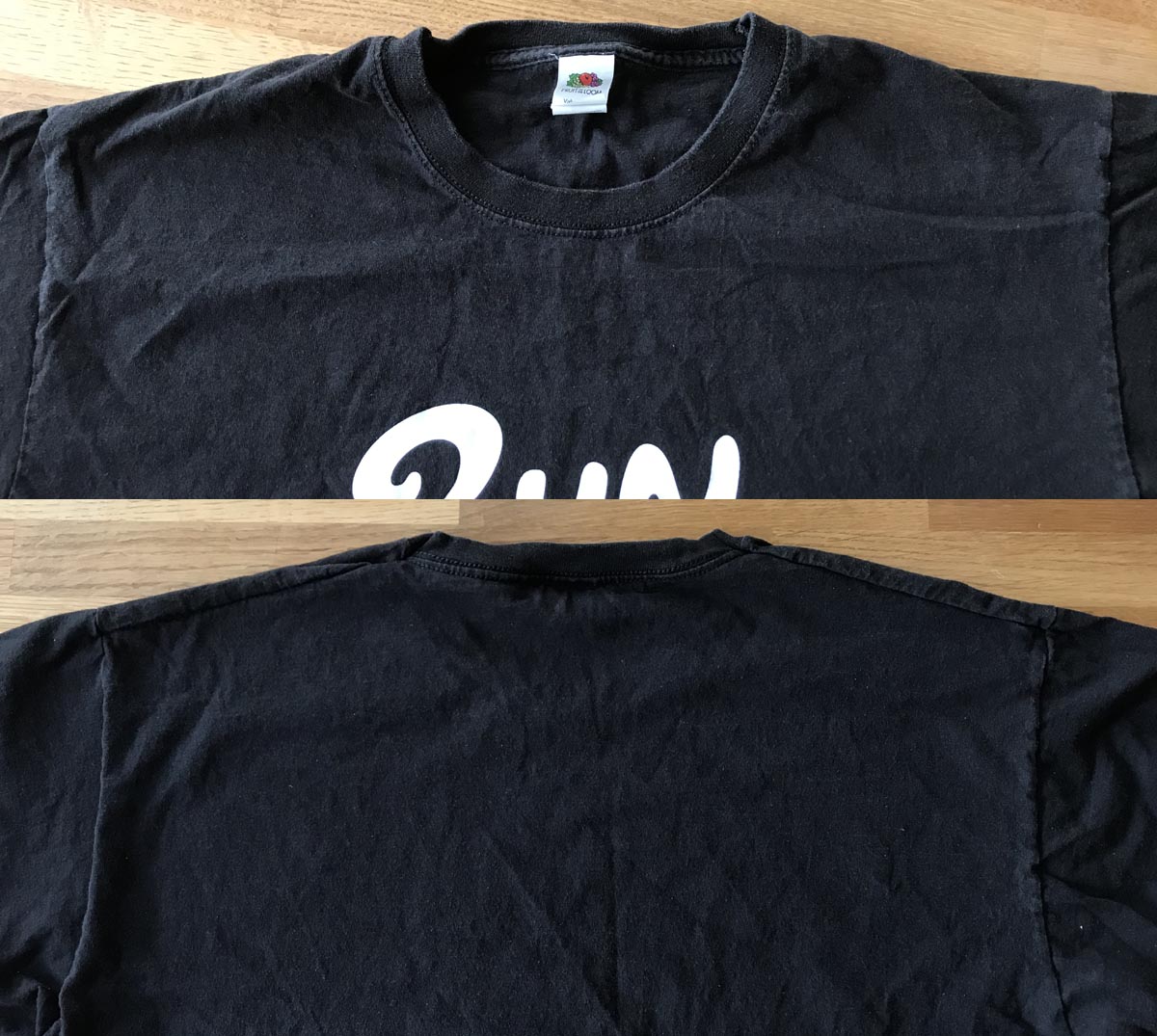
6. Now turn the T-shirt inside out. Take a look at the stitching. It will probably be complicated ‘overlock’ stitching of some kind. This looks like little triangles or squares stitched in even intervals over another thread. Your T-shirt has (almost certainly) been made by machine. Stitching is an easy way to date a smock. You can tell if it was made by hand or machine by looking at the stitching. If the stitching is very even and looks like it was done by machine then the smock is probably late-nineteenth-century (or even later) in date. If it’s hand-stitched it could be mid-nineteenth-century or earlier. Bear in mind though, many skilled makers were able to sew extremely neatly and with a very delicate hand.
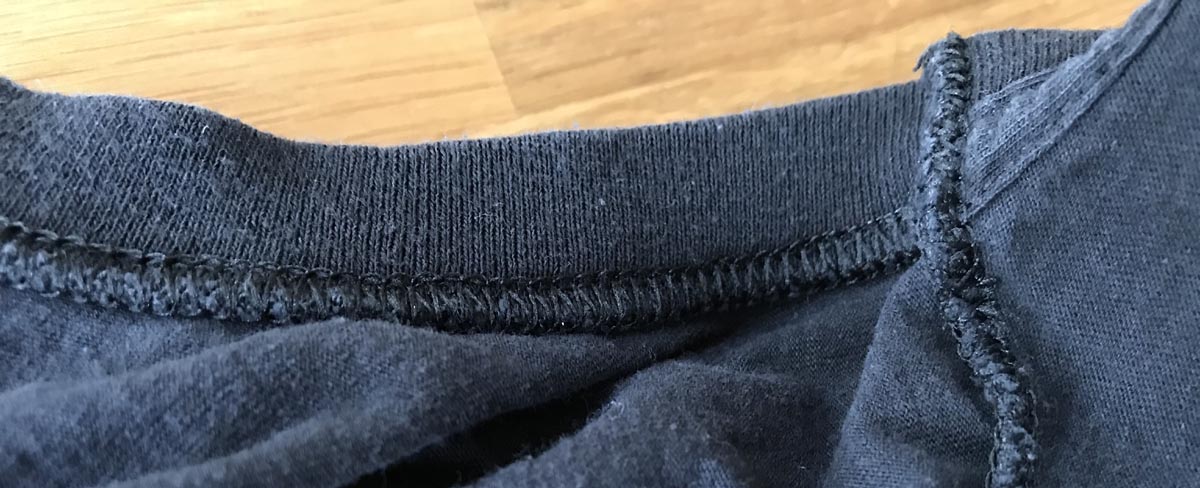
7. Let’s return to the images on your T-shirt. Do these represent what people usually do in that T-shirt. For example, if it is a sporting logo is that T-shirt always used for sport? If it’s a band T-shirt do they only wear it when listening to music by that band? Smocks are the same. Even if the symbols on them are shaped like wheels it doesn’t mean it was worn by a waggoner or wheelwright. Likewise, smocks with crooks weren’t just worn by shepherds. The ‘Run Jericho’ T-shirt in these pictures has definitely been worn for running once or twice but it has been worn around the house and in the garden far more often!
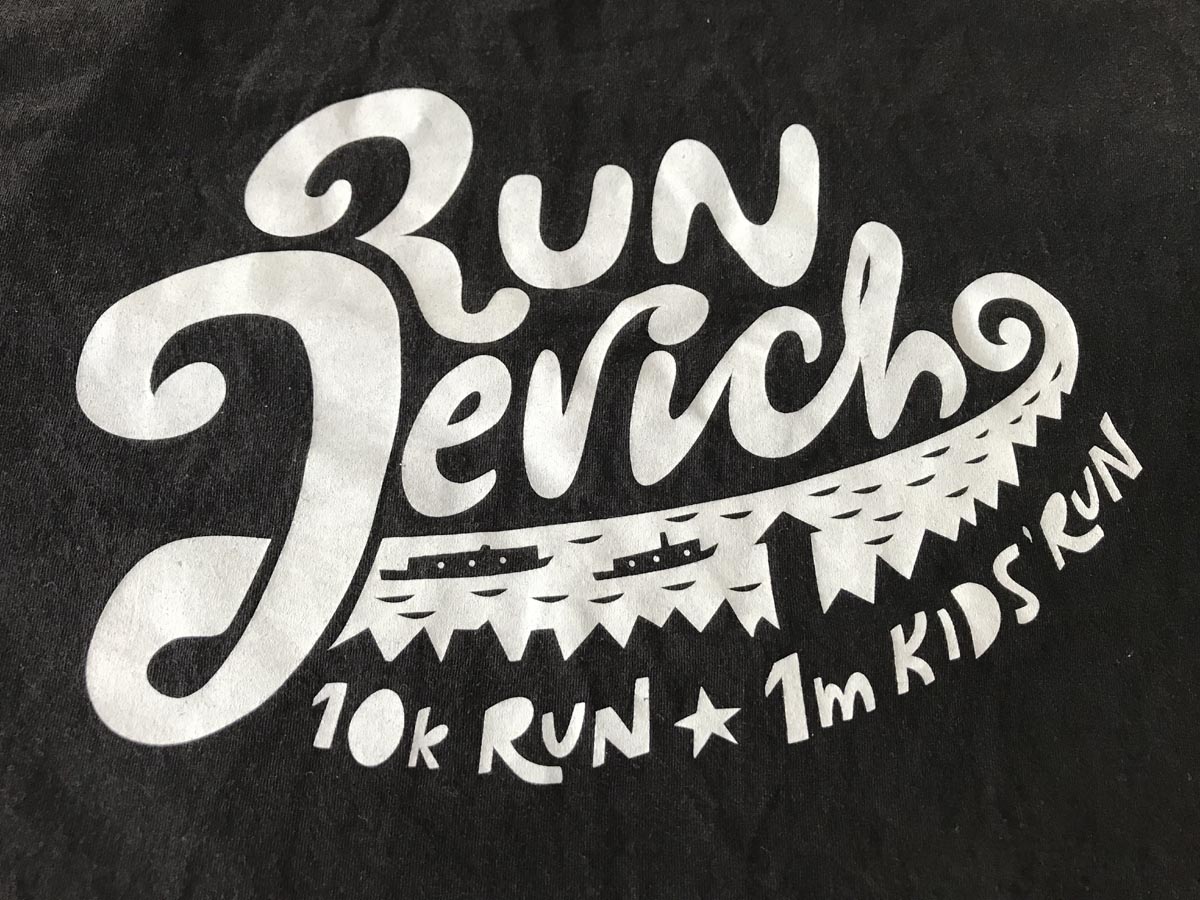
8. How old is your T-shirt? If it’s a bit worn, oily or stained that probably means it’s been used as workwear, like most smocks. If a T-shirt gets full of holes we might keep it for sentimental reasons but most are thrown away. Most smocks that survive in museums were probably worn ‘for best’ or kept to remind people of a loved one. Old working smocks were usually thrown away, much like old T-shirts. The very first smocks formally acquired by the Museum were collected by a rural writer called H. J. Massingham. One of them may have belonged to an elderly countryman called Shepherd Wiggins. We say ‘may have belonged’ because the history isn’t very clear, especially once you examine the smock close up. We recently contributed a discussion of Wiggins’ smock to the Ploy Radford’s podcast Past Matters (this is due out soon, so keep an eye or an ear out for it if you are keen to know more).
9. Finally, have you got a T-shirt linked to another part of the world? Perhaps somewhere you or someone you know has visited? Maybe linked to overseas popular culture? Ours has a name on it – ‘Jericho’ – that is a place in present-day Palestine. This suburb of Oxford was probably named after its middle eastern namesake because it sat outside the walls of the city. We often think smocks were only ever used by British farm workers. But smocks, like T-shirts, were exported. Smock frocks were used by slaves in the Caribbean. The cotton may even have been grown and harvested in these same horrific conditions. So, next time you see a smock, remember this link to the history of slavery. And next time you wear a T-shirt try to think about throwaway culture and fast fashion. Think about who made it and where it was made.
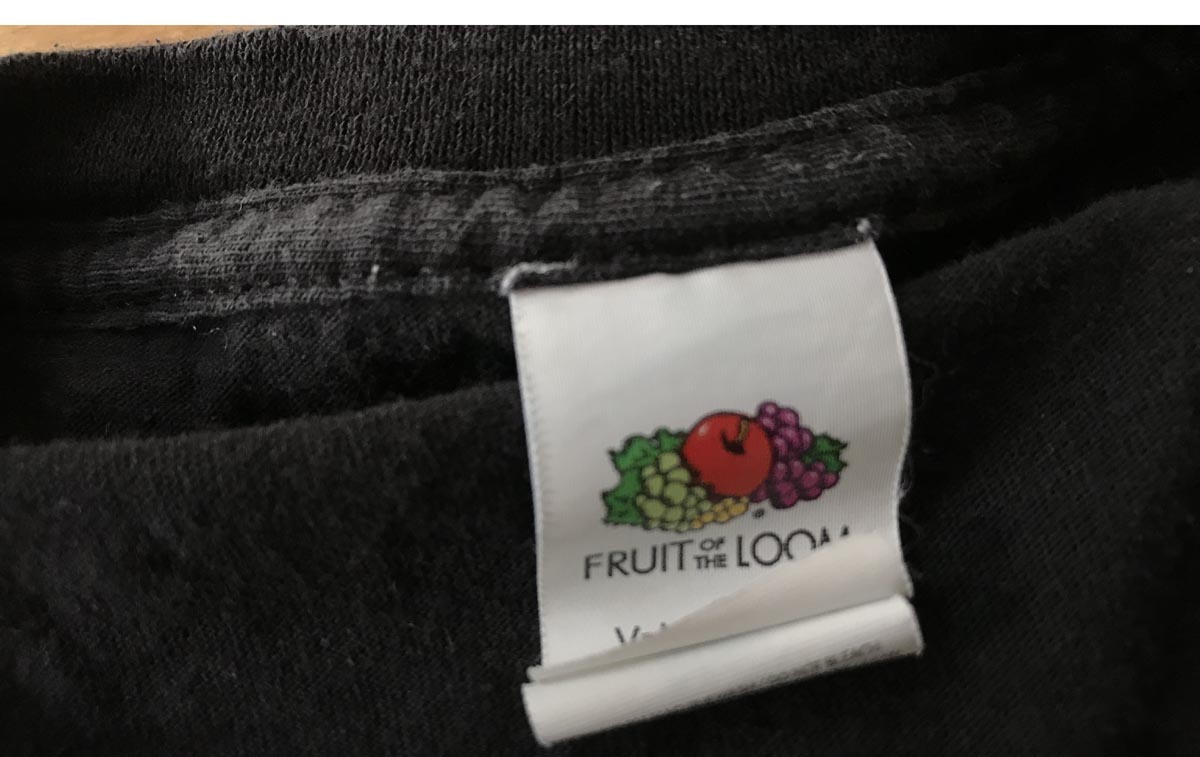
To round off today’s smocking-themed post we bring you the start of a growing resource where we are pulling together many of the amazing digital smock designs and responses created by that most unique and wonderful of crossover audiences: fans of The MERL, who play Animal Crossings, and like smocks and smocking. They rose to our frivolous challenge to design a smock, share it on Twitter, and tag it #animerlcrossing. We in turn are working our way through their amazing responses and stitching each one to a few threads of fascinating smocking heritage. We share the first fruits of this looming endeavour in this new online exhibition, #AniMERLCrossing: A Gallery of Smocks. We hope you like it. The exhibition will grow as more smock designs are added and revealed, so if you don’t see your design here yet we’ll hopefully get to it in due course. Bear with us – smocking is a time-consuming labour of love!

